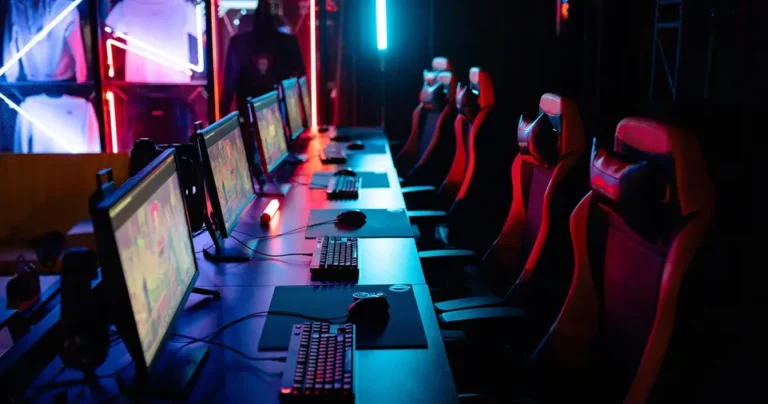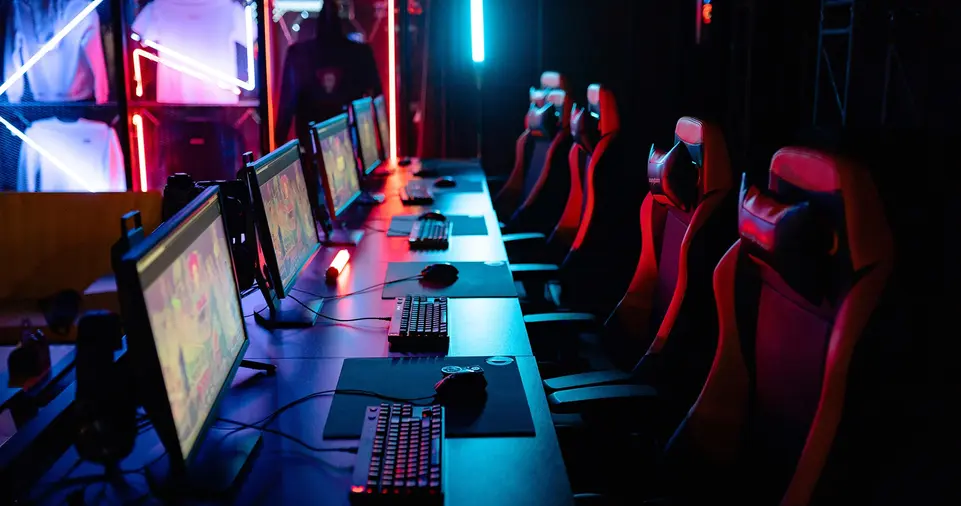Gaming tournaments have evolved into a global phenomenon, bringing together enthusiasts from all walks of life to compete, showcase their skills, and connect with others.
Whether you are organizing a casual neighborhood competition or a large-scale online event, hosting your own gaming tournament can be an incredibly rewarding experience.
These events not only create a platform for players to showcase their talents but also foster community engagement, open avenues for sponsorships, and can even generate income if planned strategically.
However, the key to a successful tournament lies in meticulous planning, effective execution, and ensuring an enjoyable experience for all participants.
This comprehensive guide will walk you through every step of hosting your gaming tournament, from conceptualizing your event’s vision to wrapping it up successfully.
By leveraging the right tools, resources, and techniques, you can create a professional and memorable gaming experience.
Let’s delve into the detailed process of hosting a gaming tournament that will leave participants and audiences eager for more.
Step By Step Guide to Host Your Own Gaming Tournament

Step 1: Define Your Goals and Budget
Before diving into the specifics of your tournament, it’s essential to outline your goals and set a clear budget.
This foundational step will shape the entire event and ensure that your resources are allocated effectively.
Establishing Your Objectives
Ask yourself why you want to host this tournament.
Your goals might include:
- Building a sense of community among gamers.
- Promoting a specific game or gaming platform.
- Raising funds for charity.
- Generating revenue through ticket sales or sponsorships.
- Creating content for streaming platforms like Twitch or YouTube.
Defining your objectives will help you make informed decisions throughout the planning process and measure the event’s success upon completion.
Setting Your Budget
Budgeting is a crucial part of planning any event.
Break down your expenses into categories such as:
- Venue costs (if hosting in person).
- Prizes for winners.
- Equipment like PCs, consoles, monitors, and gaming accessories.
- Marketing and promotional materials.
- Streaming and production costs if the event will be broadcasted.
- Staffing expenses, including referees, tech support, and coordinators.
Always allocate a contingency fund to handle unexpected costs. Even a small unforeseen expense can disrupt your plans if not accounted for.
Step 2: Choose the Game(s)
The game(s) you select will determine your target audience, tournament format, and equipment needs.
This step requires careful consideration to ensure maximum participation and engagement.
Factors to Consider
Popularity:
Choose games that are widely played and have an active community. Titles like Fortnite, Call of Duty, Valorant, and League of Legends often draw large crowds.
Accessibility:
Ensure the game is available on multiple platforms and has minimal hardware requirements to attract a broader audience.
Format Suitability:
Consider whether the game supports solo, duo, or team play. For example, battle royale games work well for free-for-all formats, while MOBAs like Dota 2 are ideal for team-based competitions.
Licensing and Permissions:
Verify whether you need permission from the game’s publisher to host a tournament. Some publishers provide guidelines or official support for community tournaments.
Step 3: Decide the Tournament Format
The structure of your tournament significantly impacts the player experience and event timeline. Choose a format that aligns with the game and the number of participants you expect.
Popular Tournament Formats
- Single Elimination:
- Players are eliminated after one loss.
- Quick and straightforward, ideal for small-scale tournaments.
- Double Elimination:
- Players get a second chance after losing in the winner’s bracket.
- Ensures fair competition but requires more time.
- Round Robin:
- Every player or team competes against every other participant.
- Suitable for smaller events with fewer participants.
- Swiss System:
- Players compete against others with similar win-loss records.
- Great for large tournaments as it ensures balanced matchups.
Clearly communicate the format to participants during registration to avoid confusion.
Step 4: Choose a Venue
The venue is one of the most critical decisions for your tournament. Your choice will depend on whether the event is online or in person.
Online Tournaments
- Use platforms like Battlefy, Challonge, or Toornament to organize matches and brackets.
- Set up a Discord server for communication and updates.
- Test your internet connection to ensure seamless gameplay and streaming.
In-Person Tournaments
- Choose a venue with ample space for participants, spectators, and equipment.
- Ensure the venue has:
- High-speed internet.
- Power outlets and surge protectors.
- Comfortable seating and tables.
- Proper ventilation and cooling.
Always visit the venue in advance to assess its suitability and address potential issues.
Step 5: Gather Equipment and Resources
Adequate equipment is the backbone of any successful gaming tournament.
Ensure that all hardware and software are in top condition to provide participants with a smooth experience.
Essential Equipment
- Gaming Systems: Consoles, PCs, or mobile devices, depending on the game.
- Monitors or Screens: Provide high-quality displays with low response times.
- Peripherals: Keyboards, mice, controllers, and headsets.
- Internet: High-speed internet with backup connectivity options.
- Streaming Setup: Cameras, microphones, and overlays for live broadcasts.
Backup Resources
Always have extra peripherals, cables, and power adapters on hand to handle malfunctions or emergencies.
Step 6: Set Rules and Guidelines
Clear rules are vital for ensuring a fair and enjoyable competition. Draft a comprehensive rulebook and distribute it to participants well in advance.
Key Areas to Cover
- Game Settings: Define in-game settings, maps, and modes to be used.
- Code of Conduct: Outline expected behavior, including sportsmanship and anti-cheating measures.
- Match Procedures: Specify how matches will be initiated, recorded, and resolved in case of disputes.
- Tie-Breakers: Provide solutions for resolving ties or draws.
Step 7: Plan the Schedule
A well-organized schedule keeps the event running smoothly and prevents delays.
Create a detailed timeline, including:
- Registration and check-in times.
- Match start and end times.
- Breaks for players and staff.
- Time buffers for unforeseen delays.
Share the schedule with participants in advance and stick to it as closely as possible.
Step 8: Promote Your Event
Effective promotion ensures maximum participation and viewership. Use a combination of online and offline strategies to market your event.
Online Promotion
- Social Media: Create event pages on Facebook, Instagram, and Twitter.
- Gaming Forums: Share your tournament details on platforms like Reddit or Discord.
- Email Campaigns: Reach out to local gaming communities and influencers.
Offline Promotion
- Distribute flyers at gaming stores and cafes.
- Collaborate with local businesses for cross-promotion.
Step 9: Manage Registrations
Streamline the registration process to make it easy for participants to sign up.
Use tools like Google Forms or Eventbrite to collect information such as:
- Player names and contact details.
- Team names (if applicable).
- Preferred gaming platform.
Set deadlines for registration and provide clear instructions for payment (if applicable).
Step 10: Secure Prizes
Attractive prizes motivate participants and add excitement to the competition.
Consider offering:
- Cash rewards.
- Gaming gear like headsets, keyboards, or gift cards.
- Trophies or medals for top performers.
Partnering with sponsors can help you enhance the prize pool while reducing costs.
Step 11: Run the Event
On the day of the tournament, focus on smooth execution and maintaining a positive atmosphere.
Key tasks include:
- Checking in participants and verifying their identities.
- Providing clear instructions for each match.
- Monitoring gameplay to ensure adherence to rules.
- Addressing technical issues promptly.
Assign staff or volunteers to oversee specific tasks, such as refereeing, tech support, and hospitality.
Step 12: Stream or Record the Event
Broadcasting your event can significantly increase its reach and appeal. Use platforms like Twitch, YouTube, or Facebook Gaming to stream matches live.
Tips for Effective Streaming
- Use professional overlays and transitions to enhance production quality.
- Include commentary to keep the audience engaged.
- Interact with viewers through chat and giveaways.
Step 13: Wrap Up and Follow Up
Once the tournament concludes, celebrate the winners and reflect on the event’s success.
Post-Event Activities
- Announce winners and distribute prizes promptly.
- Thank participants, sponsors, and staff.
- Collect feedback through surveys to improve future events.
Share Highlights
Post match highlights, photos, and recap videos on social media to keep the buzz alive and attract attention for your next event.
ALSO READ:
Last Words!
By following these steps, you can host a gaming tournament that stands out and creates lasting memories for participants and spectators alike.
With the right planning and execution, your event could become the next big thing in the gaming community.







